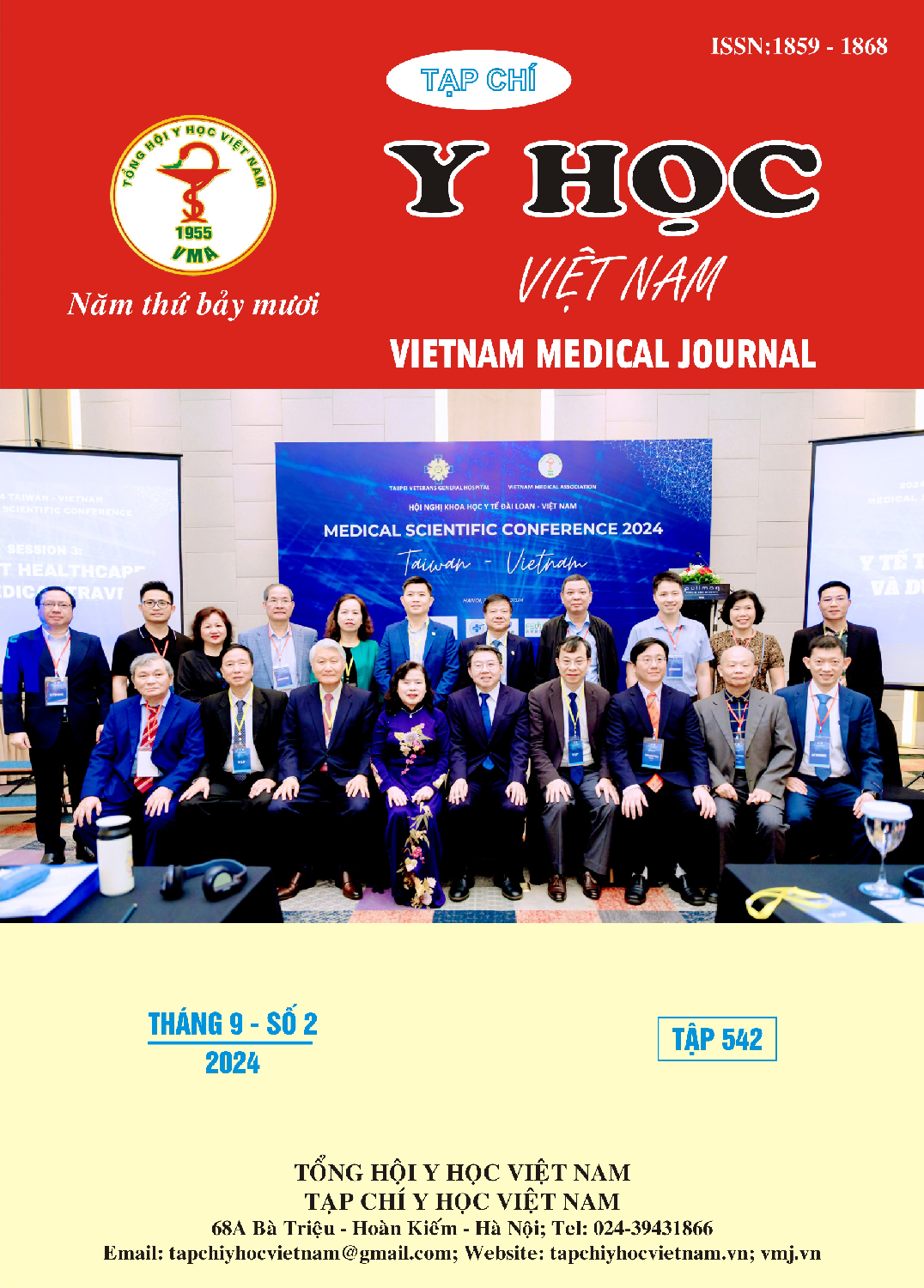EVALUATION OF THE RESULTS OF TREATMENT OF INGUINAL HERNIA IN CHILDREN USING PERCUTANEOUS SURGERY NEEDLES UNDER LAPAROSCOPIC SURGERY GUIDANCE AT HAU GIANG PROVINCE OBSTETRICS AND PEDIATRICS HOSPITAL
Main Article Content
Abstract
Objective: Evaluate the results of surgery to treat inguinal hernia in children treated with needles through the skin under laparoscopic guidance. Method: retrospective study on 68 pediatric patients with inguinal hernia at Hau Giang Provincial Obstetrics and Pediatrics Hospital from 2021 - 2023. Results: Among 68 pediatric patients with indirect inguinal hernia, there were 59 (86) .76%) male, 9 (13.24%) female. The average age was 5.31 ± 4.06 years. There were 61 (89.7%) cases of pediatric patients hospitalized because of a bulge in the inguinal and scrotal area. Examination and palpation of the hernia in 53 (77.94%) cases. The disease is more common on the right side than the left side (65.67% vs. 25.53%). The average surgical time was 6.13 ± 1.93 (minutes) for unilateral cases and 9.65 ± 2.8 (minutes) for bilateral cases. All cases had no complications during surgery. There were 11.76% (8/68) cases of contralateral hernia detected. After surgery, 1 case of scrotal swelling was recorded (1.47%). Conclusion: Inguinal hernia surgery using percutaneous suture needles under laparoscopic guidance should be applied routinely with equivalent and better results than open surgery. The advantages include: simple technique, short surgery time, checking the deep inguinal holes on both sides, and the incisions are almost very small.
Article Details
Keywords
Peritoneal tube, indirect inguinal hernia, needle.
References
2. Chen Y., Wang F., Zhong H. (2017), et al.A systematic review and meta-analysis concerning single-site laparoscopic percutaneous extraperitoneal closure for pediatric inguinal hernia and hydrocele.
3. Grosfeld, J. L., Minnick, K., Shedd, F., West, K. W., Rescorla, F. J., & Vane, D. W. (1991), Inguinal hernia in children: Factors affectingrecurrence in 62 cases. Journal of Pediatric Surgery, 26(3), 283–287
4. Michael W.L., Gauderer and Robert A. C. (2014), Hernias of the inguinal region. Operative Pediatric Surgery, 489-509
5. Nguyễn Lê Gia Kiệt, Võ Thị Ánh Trinh, và Nguyễn Văn Út (2023). Phẫu thuật nội soi điều trị thoát vị bẹn gián tiếp ở trẻ em bằng kim khâu xuyên qua da. Tạp chí Y Dược học Cần Thơ, 73–80.
6. Takehara H., Ishibashi H., Satoh H. (2000), et al.Laparoscopic surgery for inguinal lesions of pediatric patients. In: Proceedings of the 7th World Congress of Endoscopic Surgery, 537-542
7. Lim J. M., Chang H. K., Park S. J. (2020) Laparoscopic Pediatric Inguinal Hernia Repair; Intracorporeal Purse-String Suture Using Needlescopic 2-mm Instruments. J Minim Invasive Surg, 23(1), 30-35.
8. Kulaylat Afif N., Martin Kathryn Lynn (2019). Pediatric Inguinal Hernia. Springer International Publishing. 517-520.
9. Esposito C., St. S. D. Peter, M. Escolino, D. Juang, A. Settimi (2014), “Laparoscopic versus open inguinal hernia repair in pediatric patients: A systematic review,” Journal of Laparoendoscopic & Advanced Surgical Techniques, vol. 24, no. 11, pp. 811-818.
10. Nguyen D. L. and Nguyen H. B. (2017), “Evaluation of the results of treatment of peritoneal peritoneal tubal disease with laparoscopic-assisted percutaneous peritoneal ligation in children,” Journal of Clinical Medicine, vol. 8, pp. 78-83.


